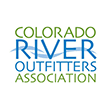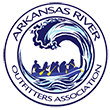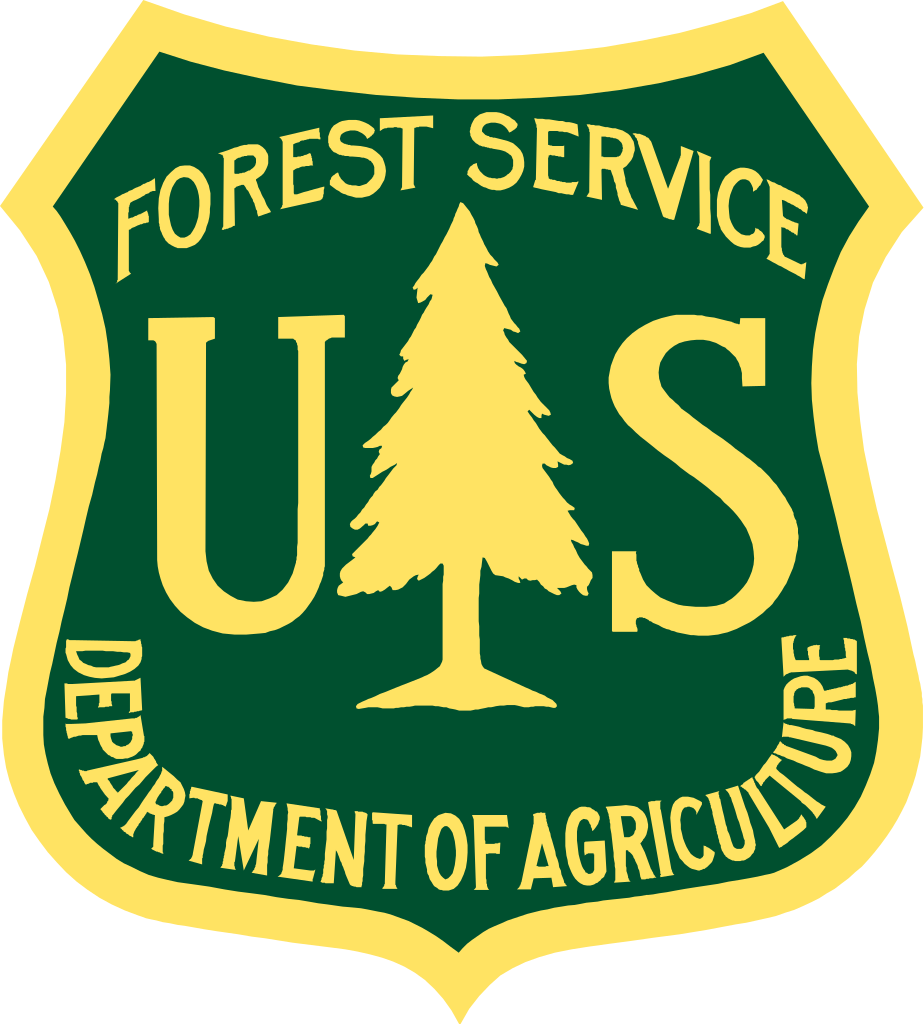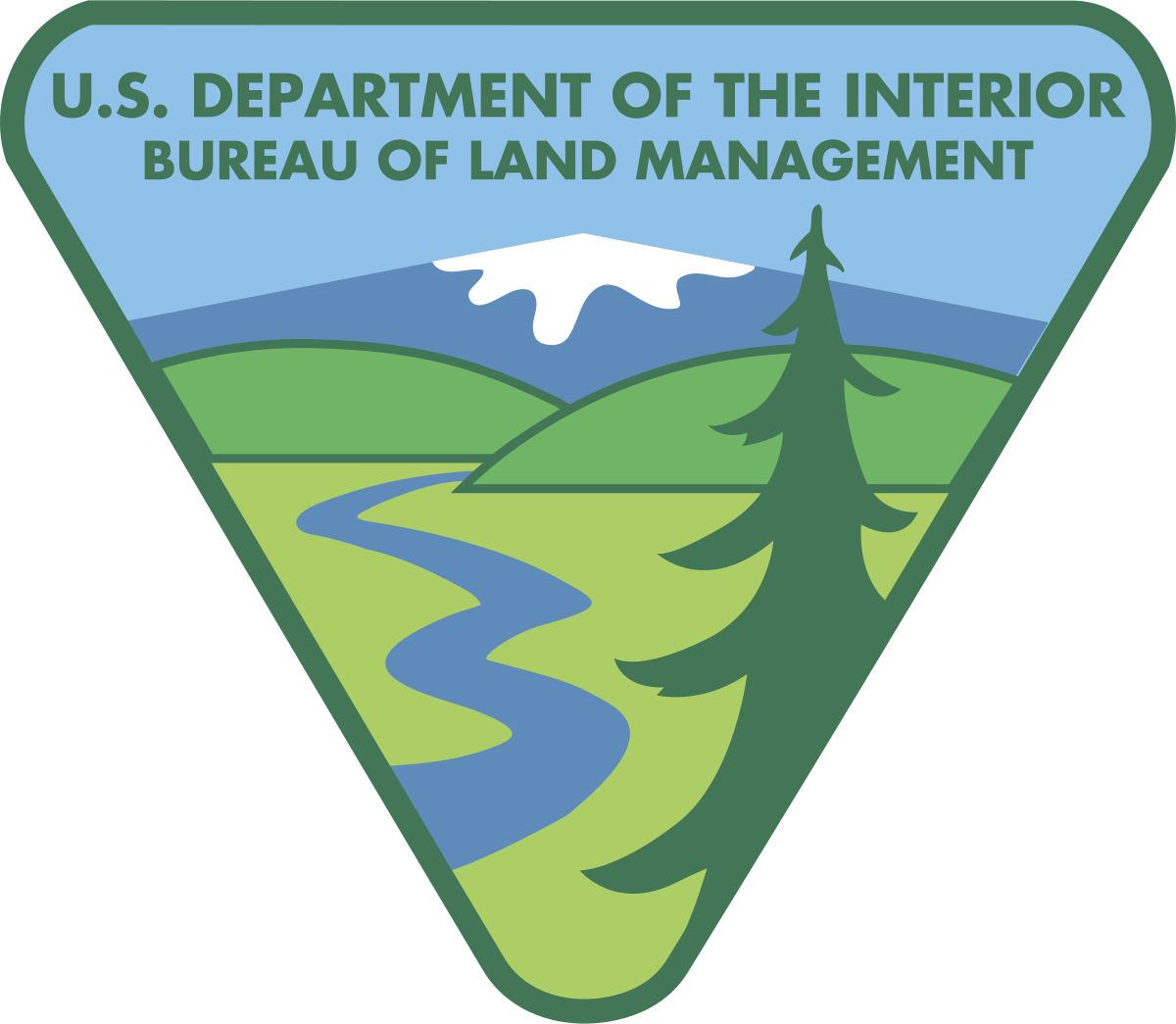Whitewater Rafting Championship
Think you have what it takes to compete in the whitewater rafting championship? The best of the best compete in the U.S. Whitewater Rafting National Championships each year in three regions of America (Western, Central, and Eastern) and the winners move on to compete internationally. Many of the best teams are from Colorado. The United States Rafting Association (USRA) oversees the Rafting Championships and works with the International Rafting Federation on competition rules so that anybody who competes in the US championships will only win according to IRF rules. Rafting Championship Competition The competition usually takes place in Colorado during the Royal Gorge Whitewater Festival in Cañon City since this is where most of the best teams are located but have moved around to different areas of the US in recent years for variety. This year, the U.S. Rafting National Championship took place May 2-4, 2014 at Salmon River, California. There were four different formats that teams had to compete in with only four paddlers per raft. The Rafting Races They began with a Sprint where each raft did an individually timed short race. Then they faced Head-to-Head to knock-out the competition like in a ladder. Those that moved on to the next round were challenged by the Slalom, where each team did two solo timed runs. The best time counted towards their score. Finally, the last event Down River counted for 40% of their scores and was the longest, most technical route of about 7 miles or approximately an hour of intense paddling. 2014 Rafting National Champions For 12 years in a row, Behind the 8 Ball of Colorado won the national championships for the men’s division. This 13th year, Ark Sharks of Colorado won it. The women’s team, Red Lady Rafting, also of Colorado, are the winners this year and will join Ark Sharks to compete in the World Championships of Rafting in Foz de Igaucu, Brazil in October with the honorable title of USA Raft Team. This is Red Lady Rafting’s second national title. Not All Fun & Games Just like other sports, these champs don’t just jump on the river the week before the competition to get ready. Practice begins as early as December hitting the gym several times a week for conditioning until they can get outside. For Ark Sharks, they train throughout the year paddling, working as river guides, and condition with Crossfit. Red Lady Rafting will sometimes drop a raft into an indoor pool to work on their muscle memory and use bungee cords for resistance. Other times it’s practicing in reservoirs where there are still chunks of ice on the banks. It’s hard work but these ladies and guys are living the dream. Next year, nationals will take place again in Colorado so be sure to pencil it in, the Royal Gorge Whitewater Festival happens the weekend of the summer solstice. Since June is the start of the spring runoff, it’s also a great time to hit the rapids yourself and join in the celebration of the river and summer. View the river rafting trips we have available or contact us for more information about booking your next trip.
Unusual Water Sports to Try
We all know about whitewater rafting, kayaking, canoeing, wakeboarding, rowing, and so on, but there are so many other water sports that are worth checking out too. Some people might call them unusual, others may call them brilliant. Either way, just being in the water when it’s hot out sounds great. These unusual water sports also make for great stories and conversation starters, after all, how many people do you know have participated in a raft rodeo? Raft Rodeo Every year, FIBArk sponsors a whitewater festival in Salida, CO in June during the first spring snow runoff. There are many raft rodeos all over the country during this time and what it entails just might be right up your alley. It starts with a small raft with one person standing at the front and holding onto a strap to the raft and two people in the back. Your teammates have to paddle against a rapid consistently so that whoever is standing at the front can “ride” the rapids without falling off for as long as possible. Funny costumes are a plus. Riverboarding Riverboarding could be compared to hydro-sledding where the person lies belly-down on a light plastic board equipped with foot fins, wetsuits, lifejacket, helmets, shin guards, kneepads, elbow pads, thigh pads, and gloves. Then they cruise downriver headfirst. You can tap into your inner mermaid as you skate over water and waves, similar to boogie boarding but in a much rockier and faster environment. It is recommended that river boarders be over a certain age and be strong swimmers as you’ll be doing a lot of kicking through rapids. Whitewater Adventure Races At the Royal Gorge Whitewater Festival, there is a Whitewater Adventure Race, which is a 5k run/obstacle course similar to the Warrior Dash and open to participants ages 12 and up. Though not entirely on water, this land course still celebrates whitewater and the adventure spirit during this exciting festival. Other whitewater rafting regions also celebrate with adventure races during the runoff. Surf Kayaking Going one step beyond sea kayaking, these kayaks are much shorter and are either sit-in or sit-on kayaks. Paddling into the waves and surfing is a dangerous sport that requires a very good instructor and understanding of how to stay safe. Capsizing attached to a kayak in the ocean is unpredictable so a helmet and lifejacket are of the essence. For those who nail down the techniques, it’s a great ocean alternative to whitewater and easier to catch waves than surfing. Stand Up Paddleboarding While this is not unheard of, stand up paddleboarding (SUP) is actually popping up in popularity across the US. Many people love this sport for the relaxing yet full body cross-training benefits. You just need a stand up paddleboard, a paddle, and a life vest. SUP is very versatile as you can do this in the ocean, lakes, and calm rivers. Similar to riding a bike, balance and body tilt will affect the direction and speed that you will go in addition to paddling. With all of these sports, safety education, the proper clothing, sun protection, hydration, and energy are needed to make sure you have a great time. Also, cut back on the arm power and utilize your core to do most of the work. Get in touch with your inner adventurer and take a look at the whitewater rafting trip packages that we have available for land, water, and air excursions at Wilderness Aware Rafting.
Exercises to Prepare Yourself for Whitewater Rafting & Other Paddling Sports
“The mark of a successful man is one that has spent an entire day on the bank of a river without feeling guilty about it.” – Chinese Philosopher If it’s your first time or your 500th time whitewater rafting, canoeing, kayaking or rowing, preparing your body for the physical stamina and strength required will make your experience more enjoyable and your physique admirable. Similar to any other sport, working out and stretching specific core muscles makes paddling much easier and you’ll be less likely to injure yourself. Although these activities seem to only require your arms and upper body, you’ll actually be using your core a lot if you are paddling efficiently and to maintain your balance. Some people mistakenly focus only on their upper body and forget about their bottom half—Pro Tip: don’t forget to work out your legs since you only need them to hold up your upper half. Increasing Endurance Since watersports like whitewater rafting require you to paddle for long periods of time, building up your endurance means you won’t be huffing and puffing into the person next to you. When you’re out of the water, work on biking, running, and swimming to build up your cardiovascular health. While you’re at it, add in some challenges like 30 second sprints, hills, and obstacles. Start with five minutes as a base to see how you feel, then gradually build up time. Before your cardiovascular workout, pre-hydrate and eat some healthy carbs such as whole grain cereal, or Greek yogurt with granola and fruit. Wrap up your workout with hydration and have some protein like peanut butter and banana, a smoothie, or a protein shake. Increasing Strength Being strong is crucial for how much water you’ll be pulling with each row and your group will be counting on you to pull your own weight too. Beware of shoulder injuries as this is common with kayakers and rafters if you overexert and strain your muscles. It is good to get your shoulders, arms, wrists, and core used to repetitive motions. Build strength and power with row machines, chest presses, pull-ups, and push-ups. Use a couple of light free weights to strengthen up the biceps and triceps. Some great ones to do are straight arm lifts to the side and front. Iron aside, do a few sets of tricep dips. Since paddling requires a lot of core muscles, throw in a few 1-minute planks and squats to your work out as well. Bonus points for doing front planks and side planks. Round out with bicycle pumps laying on your back and touching each elbow with the opposite knee and straightening out each leg. Prior to strength building, consume some low GI carbs and protein like a spinach and egg omelet or a smoothie with protein powder. Always pre-hydrate. Follow up your exercises with a chocolate protein shake or half of an avocado with cheese and tomato and a healthy serving of water. Increase Flexibility All of your hard work building up your endurance and strength will be futile if you pull a muscle every time or sustain an injury. Avoid any let downs by improving your flexibility through stretching after warming up for five minutes and during your cool down. Not drinking enough water can also lead to muscle cramps. Focus on shoulder areas and reach up with one arm and then the other. Cross-body should stretches and arm rotations do wonders for those joints. Pay attention to your posture as well—standing and sitting up straight engages the core muscles and also prevents you from lower-back pain when you’re sitting in the boat. Heading to the Water Before you jump right into the water, take a moment to warm up your muscles whether it’s jogging, sprints, or lunges. Then stretch your shoulders, arms, wrists, legs, and back. This way, your muscles are loose and ready to rock and roll. Make sure your reusable water bottle is filled, you’ve had a few swigs of that, and your snack is safe in your belly. Protect your skin by applying a water-resistant sunscreen to prevent painful burns from the sun reflecting off the water. If you’re wearing sunglasses (recommended), use a strap on the arms so you don’t risk losing them if they fall off. Lastly, get your helmet and life jacket on, have fun and enjoy whitewater rafting, kayaking, canoeing or rowing as you’re feeling stronger and more flexible. Check out the white water rafting trips we have available at Wilderness Aware Rafting or contact us for more information. See you on the river!
Rafting as Team Building Exercises
Whitewater rafting is an excellent way to encourage camaraderie and strengthen workplace relationships. Team building exercises don’t have to be at a nearby park or in a meeting room of the workplace to be effective. Most employees enjoy team building a lot more when it takes place in a new environment and involves participating in sports and fitness activities together. You don’t have to sit around telling your deepest fears and walking on hot coal in order to build up your team spirit (unless you really want to). Let’s take a look at the top reasons people organize team building activities and how you can carry out those exercises using rafting. Some of these you may prefer to choose a calmer river to use. Improving Communication Each person in the raft will spend 5-10 minutes as the “guide” and direct the group which way to paddle in order to avoid obstacles or make turns along river bends. Work together to reach different markers and rotate among every employee in the boat without falling behind the other rafters. Employees learn to react to the environment and flow of the river while having the ability to foresee upcoming obstacles and quickly respond. Learn Personal Backgrounds Starting with the person in front right side going clockwise, the first person will tell a story from when they were a small child. The next tells a story from their childhood, then preteen, then teenager, then young adult, etc. In this manner, each person gets to share a part of their background from a different stage while remaining part of the team paddling together. The other members practice listening skills and have the ability to engage with the story-teller on a more personal level too. Trust Everyone in each raft except one person is blind folded and the one with sight has to guide everyone to paddle across a river. Teams will race back and forth across the river and rotate guides until each person has guided the raft to shore. This exercise encourages employees to trust the guidance of each other while the person guiding must adjust their instructions and communication to get their team to paddle effectively as they depend on their advice. Collaboration Set up a worse-case scenario such as: the bus forgot to pick up the rafters and they have to stop on a shore and spend the night next to the river. Ask the team to work together to decide what indicators of the river shore would make them choose to stop there, how they would set up a fire, get fresh water, find food to eat, and set up a shelter based on things they see along the river. Have them come up with a list of 10 things they must do in order to survive the night. Using rafting for team building helps to provide a fun and engaging environment for employees to work on their interpersonal and communication skills together while also valuing their individual skill sets. It helps teams to learn in practice instead of in theory alone while experiencing immediate consequences and requiring creativity and critical thinking to respond with. Plan your team building river rafting trip with us at Wilderness Aware Rafting today. Our Browns Canyon Half Day Trip is our most popular on the Arkansas River. Contact us online or call us for more information 1-800-462-7238.
The Lessons of Rafting: How Rafting Can Be Used as a Business Team Building Exercise
To me, teamwork is the beauty of our sport, where you have five acting as one. You become selfless. -Mike Krzyzewski Good businesses know that team work is important, whereas great businesses know the importance of team building. If you’re looking for a fun and creative way to improve your workplace atmosphere, energy, and synergy, taking your employees for a day of whitewater rafting is it. A 2012 Wakefield Research Study shows that almost 31% of employees dislike team-building activities so skip the typical trust exercises. Let’s take a look at all the reasons why whitewater rafting is great for team building. 1. We Offer Food One of the best ways to improve workplace relationships is to have them share a meal together. If you think about it, anytime there’s a celebration, it involves gathering together for a meal. At Wilderness Aware, we offer deli-style lunches on our full-day trips and free continental breakfasts. There’s even a shaded meeting area and riverside picnic site for groups to gather and reminisce about their day on the river. 2. Team Work at its Best Another effective team-building activity is to have employees participate in fitness or sports activities together. When each person has a critical role in the raft to paddle through eddies and challenging obstacles, it sets up an open environment for bonding and encouragement. Looking back at our roots not 50 years ago when office jobs were uncommon and people physically interacted on a daily basis, you see a huge improvements in relationships. A change of scenery with a common goal gives people a fresh outlook. 3. Nature Therapy is Awesome Being outdoors and working together in Mother Nature spurs nature therapy and an experience that they’ll never forget. Nature therapy can have regenerative powers that diminishes stress, anxiety, and depression. It is a great way for people to relax together and unwind. Being outdoors also improves physical health and mental clarity. People talk and bond more when they are moving, and in this case, paddling their oars through whitewater! 4. Fun is an Option Setting up a getaway that allows employees to enjoy themselves and have fun taps into the most basic way that humans and animals improve their social skills: learning through play. It also lowers blood pressure and increases friendly pats on the back. When co-workers feel more comfortable interacting with one another, workflow and quality improves because people aren’t hesitant about approaching one another for advice or suggestions. When employees can connect to one another, it improves their happiness with their workplace. The workplace culture is taking two directions: companies that care about employee retention and a quality workplace, and companies that have high-turnover, which is usually their best employees leaving for something better. A team-building activity that is actually fun and exciting will spur innovation while also showing your employees that you do care about their overall well-beings and happiness at work. Whitewater rafting is an exciting outdoor activity that encourages team-building in an exciting and unique way. If you’re interested in planning a day on the river for your company, contact us at Wilderness Aware Rafting and we’ll be happy to help you get started.
Colorado Things to Do: Experiencing the Best of Colorado Outdoors
If there were two words that sum up Colorado, they would be: adventures outdoors. Whether you’re a tourist or a native, people expect their free time in Colorado to be spent outside in the sun with endless things to do. At 5,280 miles above sea level, a vacation in Colorado would be wasted if you don’t take a trip into the majestic Rocky Mountains. If you’ve been to or you live in Colorado, I’d bet a nickel for every time you were asked, “What are the best things to do in Colorado?” or “My friend/relative is visiting Colorado, where should I take them?” These are the best things to do in Colorado and they surely will not disappoint. Whitewater Rafting Ok, ok, maybe we are being a little biased here with whitewater rafting, but seriously, how many people do you know said they had a bad time rafting in Colorado? People who paddled in the mighty Arkansas River (the world’s most commonly rafted river) with one of our experienced and friendly tour guides leave exhilarated and wanting more. There are 95 miles of river here and plenty of experience levels and challenges to choose from; it’s like being a kid in a candy store. Another benefit of rafting with us besides the delicious gourmet meals is the amazing views of Browns Canyon where Colorado wildlife are often spotted alongside the river and up the canyons. Hiking & Biking Colorado? Mountains? Outdoors? Hiking is one of our favorite pass times and being out in the wilderness bonding with Mother Nature is one of the ways that keeps Colorado laid-back. Some of us that like to go a little faster and harder prefer mountain biking and, quite frankly, our knees thank us for it. There’s nothing quite like cruising with the wind through your hair and the smell of fresh air and pine trees. We’ll help you remember what it was like to be young while exploring the great outdoors on two wheels. Horseback Riding Horseback riding is Colorado’s second most popular outdoor activity because it’s a great taste of the Wild West with an elevated view of the beautiful landscape as you bond with a magnificent creature. A peaceful ride along Chalk Creek to a railroad bed or to a waterfall is just what the doctor ordered. A journey through the wilderness with your trusty steed is an exciting yet calm way to explore Colorado outdoors. Just a little bit of nature-therapy to nourish your soul. Zip-Lining For those looking for a more thrilling taste of Colorado zip line tours, soaring through the forest’s tree tops will get your heart pumping. This is a great way to spice up family vacations while also lowering your blood pressure and burning calories. Feelings of accomplishment, bravery, excitement, and being like a bird soaring through the trees are included. Excited to head to the mountains yet? Check out our Whitewater Rafting & Adventure Trip Packages and plan your Colorado outdoors trip with us today.
10 Life Lessons Learned From Whitewater Rafting
If you’ve done a certain activity for long enough, eventually lessons will start presenting themselves to you. The lessons may not always be clear, and they may not even be noticeable at first. But through trial and error, enduring hardships, and endless questioning, the world becomes a little clearer. The life lessons that follow here are based on my experiences of whitewater rafting and being out in nature for extended periods of time. This is not to say some of these lessons wouldn’t have been learned otherwise, it’s just rafting happened to be the teacher in these instances. You Never Know What Lies Ahead Without Scouting Before making any serious commitment or decision, especially one that would be difficult to undue or break, be sure you know exactly what it is you’re getting yourself into. You never know what lies around the bend in the river, or life, unless you first investigate and explore it. The Sun Illuminates and Brings Facts to Light Better Than a Bulb If you ever have a question that needs answering, a concern that needs easing, or a problem that needs solving, many times you’ll find your solutions more easily while contemplating outdoors. Something about the fresh air, wide open spaces, and the suns warm glow allows our minds to wander more freely. It helps to let our emotions calm down and clear any clouds in our judgment. Physical Exhaustion is Often Better than Mental Physical exhaustion is easier for your body to deal with and recover from than being mentally tired. Physically, your muscles may be sore and ache, but after a good meal and full nights rest, your body can recover rather quickly. Being physically tired brings better sleep, the exercise helps to keep you healthy, and overall you may become happier. Your mind on the other hand does not find these benefits of being tired. After working your mind for too hard for too long, stress, anxiety, depression, confusion, and irritation can set in, all of which can be rather difficult to overcome. This is especially true over long periods of time. Your body can rest once you stop moving, your mind is not so easily turned off. Character Is Truly Exposed When Times Are Hard You never know the true character of a person unless their character is tried in some way. Sort of a trial by fire, you never know what someone is capable of until they are faced with difficult times to see how they react. In some cases you’ll be pleasantly surprised; in others you may be sadly let down. But none of this will be known until the person is tested in a trying fashion. To Live Life to the Fullest Means You Have to Fully Live Anyone who is alive can be said to be living. But living fully is entirely different, and of course depends on the person whether or not that is being achieved. People only have one shot through this life and there is no point in not living how you want to live. Living fully means following your heart, doing the things that you enjoy and bring you pleasure. Simply having a heartbeat does not mean you’re living… making your heart skip a beat however does. Many of Our Worldly Woes and Concerns Are Meer Figments of Our Imagination When it comes down to it, if you are truly able to consider it with an objective mind, most problems we face on a daily basis are not necessarily “real”. Many of our negative thoughts and feeling can be easily overcome through proper thought. Our thoughts create our reality, and our beliefs are the filter of our reality. If we think positively and believe fully that our thoughts are true, rarely will such negative thoughts hold any weight or meaning. Long Term Happiness Cannot be Found or Gifted, It’s Personally Created People mistakenly believe happiness is something you can purchase, be given, or even just wake up with. It’s somehow believed that happiness is continual and can transfer over from the day before. But that’s not the case, happiness arises from your daily activities and has to be personally generated and created every day. You become happy by doing things you enjoy, you stay happy be continuing to do those things. Without Hard Work There Is Little to Gain to Be Proud Of Little in the world that has value can be had or achieved for free. Typically, the more something is worth, the more that thing will cost. Hard work certainly isn’t fun, but that’s why it’s called work. Most goals people set for themeselves are valuable and rarely are they easily achieved. This is what makes achieving those goals so meaningful, it’s the fact that it wasn’t easy. Which did you find more pride in when you were in school, getting a B+ on that difficult exam you studied endlessly for, or getting a gold star for your participation in class? Chances are it would be the B+ score, because you worked hard to achieve that which gave it greater value. Failure in Life Teaches More than Success There is more to learn from failure than success. In fact you don’t learn much from doing something perfectly correct because you did it right the first time. The least you’ll learn is to do the same process again as it already worked. Valuable lessons are learned and built upon failure because you realize where you went wrong and figure out how to adjust to make it better. Trial and error is the classroom of life while failure is its teacher. Fear is The Root of All Evils Fear is stifling, cancerous, and can create most of the evils that plague people. Vanity can arise from a fear of physical appearance. Greed can arise from a fear of poverty. Arrogance can arise from a fear of not being important. Gluttony can arise from a fear of there not being enough in the
How A Bad Day Fishing Beats A Good Day Of Channel Surfing
Inspirational author William Arthur Ward once observed, “Adversity causes some men to break; others to break records.” However not everyone plays sports to keep score. Some people consider their best chance at playing a sport to be something others might classify as a recreational pastime, like fishing! When you see someone sitting in a boat in a body of water, relaxing on the bank of a river or lake, or standing on the beach with fishing pole in hand, it is easy to assume that this person is just lazing away the day. However fishing carries some pretty hefty health benefits, in some cases as much as playing a team sport! Health Benefits of Fishing The National Hunting and Fishing Day website reports that on the average, each year more than 44 million Americans who are age 6 or older spend time fishing. They might the country’s many lakes, rivers, and streams, or along the coastal areas, such as in an ocean or a bay. And that is good news, because that means 44 million Americans are getting off the couch and taking part in some kind of physical activity! This hobby is not just for sportsmen, as entire families spend time fishing together. Here are a few of the health benefits frequently associated with this recreational pastime. Low Impact – Fishing is not physically demanding, which means it does not take a lot of stamina or strength. This makes fishing the perfect sport for people of all ages, in most cases even ones faced with some type of health challenge. Heart Friendly – Walking from your vehicle to the fishing spot and reeling in the fish at the other end of the line both exercise your heart, while the stress-free times of waiting in between bites allows you to relax which helps lower your blood pressure. Fresh Air and Sunshine– Being outside means breathing in fresh air and soaking up some extra Vitamin D from the sun. Even if you suffer from seasonal allergies, there are steps you can take to enjoy being outdoors any time of the year to fish. Relaxing – When you are outdoors taking part in a recreational activity like fishing, you leave the stress of work and home behind. Stress free fishing allows you to clear your mind, relax, and perhaps even inspire your creative juices. Recreational fishing has no deadlines. Nobody keeps score about how many fish you caught or the details about the ones that got away. And unless you are taking part in some type of fishing contest, there is no clear winner or loser when it comes to recreational fishing. It is not just everyday, average Americans who enjoy fishing. Some of the biggest names in sports also enjoy recreational fishing as a way to kick back and relieve stress, including former NFL quarterback Peyton Manning, major league pitcher Mat Latos, PGA champion Tiger Woods, andNHL defenceman Ian White. Fishing Benefits – Not Just for Humans As you can see, who you are and the details of your lifestyle matter very little when it comes to this sport. While can enjoy the benefits of fishing just the same as anyone else, you are not the only one reaping the benefits! Fishing is as good for the environment as it is for the humans that take part in the sport. When you go fishing, you are supporting wildlife and fish management. Fishing often requires buying a license, and the fees for purchasing one go towards funding programs that contribute to conservation. Most importantly, fishing generates millions of dollars in taxes alone which supports jobs and boosts the economy. Finally fishing improves your diet. When sitting on the couch surfing the television channels, the refrigerator and kitchen are nearby, stocked with all sorts of foods. An afternoon of fishing limits you to what you pack in the cooler. Make sure you stock plenty of healthy treats and bottled water to avoid becoming dehydrated. And if you are up for the adventure of cleaning your catches, there is nothing like eating fresh fish that you catch yourself at the end of the day. At Wilderness Aware Rafting, being river runners we love fishing, but our passion is rafting. If you’re interested in a Colorado Rafting Trip, multi-day rafting trip, or want to try whitewater rafting the Salt River in Arizona, please be sure to contact us and find out what white water rafting trips we have available. Freelance writer Benjamin Baker loves camping and fly fishing in the wilderness around his home in Denver, Colorado. He even ties his own flies! Benjamin shares his home with his wife and their busy, growing teenage children.
The Family Mountain Biking Checklist
Apart from being a great individual sport, mountain biking is also a fun and healthy activity for the whole family. As mountain biking is quickly becoming one of the most popular family activities around the world we decided to write this simple five point checklist to help you plan your first or next family mountain biking excursion. This is in no way an exhaustive list, but will give you a good idea of what’s important to remember. 1. Essentials The two things on the checklist you’re most likely not to forget, but frequently do, the bikes and helmets. Get your bikes out of storage, and put them where they belong before you doing anything else to avoid having to explain to mom and children how you forgot to bring little David’s bike to the biking trip. If you don’t have helmets yet, get them, most trails will require that everyone in your group wear helmets and it’s a good thing to teach children to wear helmets from a young age. 2. Personal Health A helmet will protect you and the family from a hard fall, but as mountain biking is inherently an outside activity you’ll be exposed to the elements throughout the trip. These items aren’t required, but will save you a lot of problem later on. A hydration pack or water bottle for hydration, gloves, eye patches or face mask, first aid kit, weatherproof clothing, sunscreen and footwear made for biking! 3. Protection If you’re really serious about protecting yourself and willing to go full out with your kit, you can look at taking some of the following items with you. Insect repellent if you’re in an insect prone area, camoi cream for sores or inflammation, a full face helmet for complete face protection, cell phone to call emergency services, extra food in case you need to survive somewhere for a while and toilet paper to protect your dignity. 4. Navigation Mountain biking is great because it takes you into nature away from the bustling city, but this also means that there won’t be signs showing you where to go, so knowing where to go is up to you. If you can afford it take along a GPS with your route planned out beforehand, but if you don’t get the GPS at minimum you should have a compass which you know how to use. Also take a taillight, headlight, emergency whistle and lock if you plan on sleeping over somewhere. 5. Repairs There’s a 99% chance you’ll have to stop somewhere to do repairs to one of the bikes, that’s just part of mountain biking, fortunately, if you have the right gear, you can repair nearly anything right there next to the road. Some of the most important repair items to take along include a spare tube, pump, multi-tool and patch kit. If you want to be over prepared, which is a good thing, you can also take along brake cables, chain tool, pressure gauge, and replacement chain links and spoke wrench. Jason O’Reilly is an avid bicycle rider, professional product reviewer and all-around outdoorsman.
National Take A Hike Day Is On Nov. 17th! Where Will You Go?
Some Of The Greatest Places In Colorado To Venture For National Take A Hike Day November 17th is National Take a Hike Day, and at Wilderness Aware Rafting, we even understand the need to get out of the boat from time to time and stretch our legs! And there is no better time nor place, than during the Fall season in Colorado. With the changing of the surrounding colors, the brisk mountain air hinting that Winter is approaching, the snow tipped peaks in the distance, Fall hiking couldn’t be better anywhere else. So to help you decide where to go hiking, here is a list of some of the better spots you should check out. Of course before venturing out, ensure you know the area and have a map of the trails you intend to hike. Carry the essential equipment, and most importantly, enjoy it! Indian Peaks Wilderness Area Outside of Boulder lies the Indian Peaks Wilderness Area. This area has some of the best back-country fishing around, and one trail specifically leads to the holy grail of fishing serenity, the East Portal Trailhead. This region has numerous lakes and a slew of smaller ponds to explore and fish in. All of which lay at the bottom of the mountain range which acts as the areas backdrop. Most notably there is Arapaho Lakes, Crater Lakes, Forest Lakes, Iceberg Lakes, Roger Pass Lake, and Heart Lake. By coming here in the fall when its cooler, you will hopefully be able to avoid the hassle of the countless mosquitos which plague the area. Going in the dead of summer will bring you into direct conflict with these critters, but during the Fall they should be significantly more timid. Mosquitos or not, this area is stunning, fishing supreme, camping and camp fires allowed as well as dogs. Of course call in ahead of time to ensure this remains so, but this is certainly one of the greatest gems outside of Boulder hands down. Rocky Mountain National Park Outside of Estes Park lies Colorado’s most esteemed wilderenss area, the Rocky Mountain National Park. It comprises over 265,000 acres, 360 miles of hiking and riding trails, 60 peaks over 12,ooo feet, 150 lakes, and 450 miles of rivers and streams. The wildlife ranges from moose and bear to mountain lions, goats, and sheep. There’s no wonder countless stories, songs, and movies have been made with the Rocky Mountains as the over arching theme. When looking for beauty, peace and serenity, and countless activities to enjoy and partake in, the Rocky Mountain National Park is a grown-ups playground. Sadly and fortunately, there is too much to cover to attempt to give you an idea of where to go here as really the whole areas an oyster and you can pluck the pearl wherever. Do your research as many areas take a while to get to, some require 4×4 access if you don’t want to hike in fully. But regardless of where you choose to go, there is no doubt you will be pleased with your choice. Great Sand Dunes National Park Outside of Alamosa lies North America’s tallest set of Sand Dunes in the Great Sand Dunes National Park. They rise in sequence over 700 feet from the base of the San Luis Valley in the Sangre de Cristo Mountains. Surprisingly, the Sand Dunes host a wide variety of wildlife including Black Bear, Bighorn Sheep. Mountain Lions, Badgers, Beavers, Elk, Bison, and the Pronghorn. the Pronghorn is the fastest land animal in North America, with tops speeds over 55 mph and the ability to sustain a trot at 25 mph, these antelope like creatures are quick and nimble. You would no doubt find great delight in seeing them run around. They’re nimble, quick, and agile, which makes for quite the scene when they leap and bound over obstacle after obstacle. There are two main trails that lead through the Sand Dunes with multiple smaller trails leading off of those. The Sand Dune Trail is only 2.5 miles round trip making for a relatively easy hike. While Exploring the Sand Sheet trail is 10.5 miles round trip and though this may seem like a long ways, when you want to see the Sand Dunes for what they are, this is the trail to take. The Sand Sheet holds 90% of the dune’s total sand mass. This entire region is unique to Colorado, and is a stark reminder that Colorado is in fact a high altitude desert, something many people either don’t know or understand. Colorado National Monument Outside of Grand Junction lies Colorado National Monument. If you are looking for picturesque red-rock canyons, towering sandstone spires, tree-topped mesas, and the ability to hike along the Colorado River, than this area is for you. This region has the perfect set of colors which compliment each other in an absolutely ridiculous manner, and the rock formations that stand there are nothing short of awe inspiring. Standing atop one of the many saddles that look over one of the many canyons, you will notice every shade of green imagineable, as the elevation increases and becomes steeper, the green fades to wide range of reds, pinks and peaches which make up the sand stone. The layers continue up until the mesa tops where further vegetation grows. Finally, everything is usually capped with the magnificent blue which the signature of the Colorado sky. Depending on what you hope to see and experience will dictate exactly where in the Colorado National Monument you should choose to visit. If you want to do some easy rock scrambling, hike to the top of a mesa, walk under arches, through canyons, or even bring your bike to bicycle the 23 mile Rim Rock Drive that connects the two entrances to this beautiful area, your possible choices are many and all wonderful. The hardest thing will be to decide on what to do. Be Sure To Make A Trip While The Trip Is Possible Hopefully this







